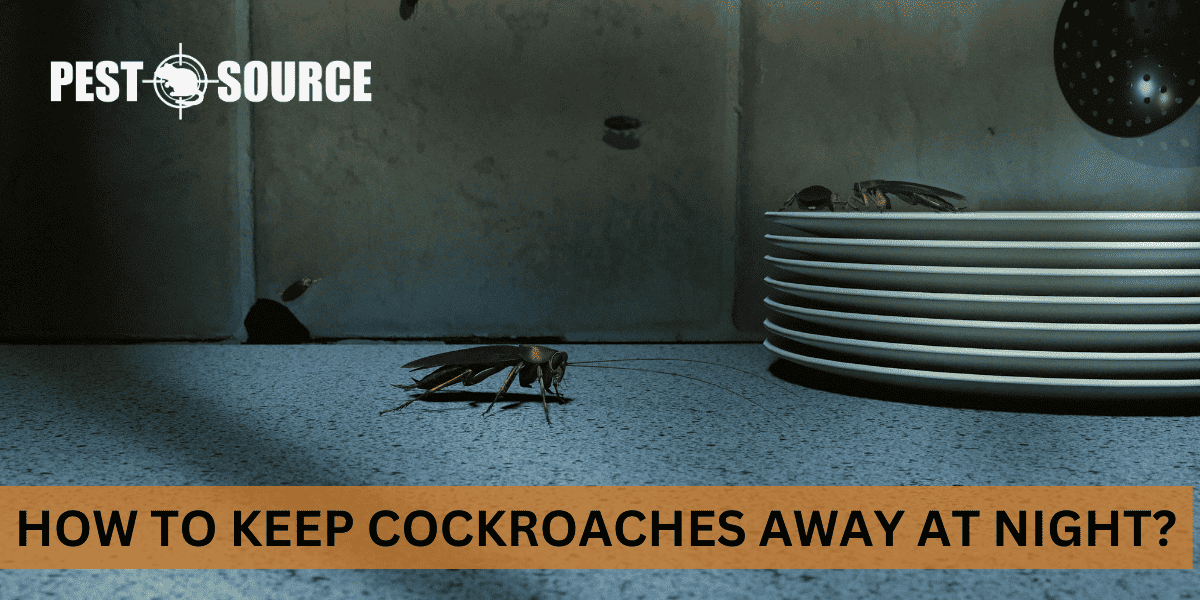To keep cockroaches away at night, ensure cleanliness and remove food sources by sealing food containers and disposing of garbage regularly. Fix water leaks and reduce humidity, as cockroaches are attracted to moisture. This article offers practical tips and preventative measures to create an environment less hospitable to cockroaches, reducing their nighttime activity in your home.
POINTS
- Maintain a clean and clutter-free environment, especially in the kitchen and bedroom, to deter cockroaches from foraging and nesting in your home.
- Seal all potential entry points, including cracks, crevices, and gaps around utility lines, to prevent cockroaches from gaining access to indoor spaces.
- Use natural deterrents like essential oils and diatomaceous earth, and practice regular home maintenance to create an inhospitable environment for cockroaches.
- Monitor for signs of cockroach activity, such as droppings, egg cases, and unusual odors, to detect and address infestations early.
- Consider professional pest control services for expert identification, effective treatment, and preventative advice if infestations persist or are severe.
Immediate Strategies for Deterring Cockroaches During Nighttime
Cockroaches are notorious for their resilience and their preference for dark, warm environments, which is why they’re often more active at night. To deter these nocturnal pests effectively, it’s crucial to take immediate action. Let’s explore some practical steps you can take to keep cockroaches at bay while you sleep.
Cleanliness and Food Source Reduction
First and foremost, cleanliness is your best defense against cockroaches. These pests are attracted to food remnants, so it’s essential to:
- Wipe down surfaces: Clean kitchen counters, dining tables, and any other surfaces where food is prepared or consumed every night before bed.
- Store food properly: Keep food in sealed containers and never leave food out overnight.
- Dispose of garbage regularly: Take out the trash each night to avoid giving cockroaches a feast to enjoy.
- Clean dishes immediately: Avoid leaving dirty dishes in the sink or dishwasher overnight, as they can attract roaches.
Sealing Entry Points
Cockroaches can squeeze through the smallest of gaps. To prevent their entry:
- Inspect your home: Look for cracks and crevices around windows, doors, and plumbing.
- Use sealants: Apply caulk to seal any openings you find, especially in kitchen and bathroom areas.
- Repair screens: Fix any tears in window or door screens to keep roaches out.
Natural Deterrents and Repellents
There are several natural remedies that can help keep cockroaches away:
- Essential oils: Cockroaches dislike the smell of certain essential oils like peppermint, eucalyptus, and tea tree oil. Mix a few drops with water in a spray bottle and apply to areas where roaches are a concern.
- Diatomaceous earth: This natural powder can be sprinkled in areas where cockroaches might enter or hide.
- Boric acid: A mixture of boric acid and sugar can act as a bait and poison for roaches, but should be used cautiously if you have pets or children.
Keeping Roaches Away from Beds and Furniture
Your bed and furniture are sanctuaries; you don’t want cockroaches invading them. To keep these areas roach-free:
- Elevate your bed: Consider using bed leg protectors that prevent roaches from climbing up.
- Vacuum regularly: Regularly vacuuming your floors and upholstered furniture can remove any food particles or roach eggs.
- Use mattress covers: Encasing your mattress and pillows in protective covers can deter roaches from taking up residence.
Maintaining a Clean and Clutter-Free Bedroom
A clutter-free environment is less inviting to cockroaches because it eliminates their hiding spots. To maintain a bedroom that’s unattractive to roaches:
- Declutter regularly: Keep your bedroom tidy by minimizing clutter where cockroaches can hide.
- Store items properly: Use plastic storage bins with tight-fitting lids instead of cardboard boxes.
- Regularly wash bedding: Clean sheets and blankets regularly to remove any food stains or odors that might attract pests.
By implementing these immediate strategies, you can significantly reduce the likelihood of cockroaches turning your nighttime into their playground. Remember, the key is to be proactive and consistent with your efforts.
Understanding Cockroach Nocturnal Behavior and Activity Patterns
Why Cockroaches Are More Active at Night
Cockroaches are nocturnal creatures, which means they are more active at night. This behavior is primarily for survival, as it helps them avoid predators and increases their chances of finding food without being detected. Understanding their nocturnal habits can be instrumental in planning your prevention strategies.
Cockroach Biology and Behavior Patterns
Cockroaches have adapted to thrive in various environments, but they all share common behavior patterns:
- Seeking darkness: Roaches prefer to operate in the dark and will typically flee when exposed to light.
- Searching for food and water: They are most active when foraging for food and water, which is often easier to find in the quiet of the night.
- Reproducing: Nighttime is also when cockroaches are likely to mate and lay eggs, leading to rapid population growth if not controlled.
Debunking Myths
There are many myths about cockroaches, such as the belief that they crawl on people at night or that they sleep during the day. While it’s uncommon for cockroaches to crawl on sleeping humans, it’s not impossible, especially if food residues are present. As for sleeping, cockroaches don’t sleep in the same way humans do but will be less active during the day, often hiding in dark, secluded spots until nightfall.
Developing Effective Prevention Strategies
Armed with the knowledge of cockroach behavior, you can tailor your prevention strategies to be more effective. For example, since cockroaches are most active at night, you can focus your control efforts during the day to disrupt their normal activity patterns and make your home less appealing to these pests.
Comprehensive Approaches to Preventing Cockroach Infestations in Living Spaces
Continuing our battle against the resilient cockroach, let’s delve into long-term strategies that can help keep these unwelcome guests from taking up residence in your home. A comprehensive approach to cockroach prevention involves regular home maintenance, vigilant cleaning routines, and proactive monitoring.
Regular Home Maintenance
Maintaining your home is essential in preventing cockroach infestations. Here’s what you should focus on:
- Fix leaks promptly: Cockroaches need water to survive, so repair any dripping faucets or leaking pipes to eliminate their water source.
- Seal gaps around utility lines: Use expandable foam or copper mesh to fill spaces around pipes and cables entering your home.
- Ensure proper ventilation: Install vents in high-humidity areas like bathrooms and kitchens to reduce the moisture that attracts roaches.
Cleaning Routines
A strict cleaning routine is your second line of defense. Be sure to:
- Sweep and vacuum frequently: Regularly clean floors to remove crumbs and debris.
- Disinfect regularly: Use disinfectants in your kitchen and bathroom to eliminate the germs and residues that attract pests.
- Manage pet food: Store pet food in sealed containers and don’t leave it out overnight.
Monitoring and Identifying Signs of an Infestation
Early detection can make all the difference. Keep an eye out for:
- Droppings: Look for small, black specks or smears in drawers, cabinets, and under appliances.
- Egg cases: Cockroach egg cases (oothecae) are oblong and dark-colored, often hidden in secluded areas.
- Unusual odor: A musty, oily smell can indicate a large infestation.
If you do find signs of cockroaches, act quickly to assess the situation and determine the best course of action, which may include setting traps, using baits, or contacting a professional pest control service.
Landscaping to Reduce Roach Attraction
The area surrounding your home can also attract cockroaches. To make your property less inviting:
- Trim vegetation: Keep bushes and trees trimmed away from your home to reduce shelter for roaches.
- Manage mulch and leaf litter: These can provide ideal nesting spots for cockroaches, so keep them clear of your home’s foundation.
- Properly store firewood: Keep firewood off the ground and away from your home’s exterior.
Seeking Professional Pest Control
Sometimes, despite your best efforts, you may need to call in the professionals. Pest control services can offer:
- Expertise: Professionals have the knowledge to identify the species of cockroach and understand their habits.
- Effective treatments: They have access to commercial-grade insecticides and bait systems that may be more effective than over-the-counter options.
- Preventative advice: After treatment, a good pest control service will provide you with advice to prevent future infestations.



